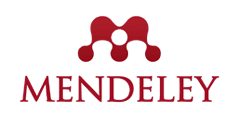The Appropriate Teaching Method for the Uninterested English Learners
Keywords:
Motivation, Constructivism, Natural ApproachAbstract
This journal describes some efforts made in a classroom in generating to Uninterested English students to learn English for Academic Purposes by improving the contents of learning materials (syllabus), methods, and activities for students’ learning experience based on Constructivism Approach (a theory of learning in general) and Natural Approach (a theory of language learning) . The research was carried out at First Grade students of STAI Samora Pematangsiantar. The results revealed that the actions applied led to improvement in students’ motivation and active participation in learning.
References
Armstrong, Thomas. (1994). Multiple intelligences in the classroom. Alexandria VA:
Association for Supervision & Curriculum Development.
Chodidjah, Itje. 2004. Preparing Lecturers to Teach English to Young Learners: A Customized Model.
Available at http://uptbahasaitb.tripod com/conf2004. Retrieved on December 2007. Jacobson, J. & Raymer, D. (1999) The Big Book of Reproducible Graphic Organizers. New
York. Scholastic.
Nicholson-Nelson, Kristen. (1998). Developing Students’ Multiple Intelligences. New York: Scholastic.
Shalawy, Linda. (1997). Learning to Teach … not just for beginners. New York: Scholastic. Slattery, Mary and Jane Willis. 2001. English for Primary Lecturers. New York: OUP. Willis, J. 2001. A Framework for Task-Based Learning. Essex: Longman.
Downloads
Published
How to Cite
Issue
Section
License
Copyright (c) 2023 Sri Wahyuni Sri Wahyuni

This work is licensed under a Creative Commons Attribution-NonCommercial 4.0 International License.

This work is licensed under a Creative Commons Attribution 4.0 International License.
Authors who publish with this journal agree to the following terms:
- Authors retain copyright and grant the journal right of first publication with the work simultaneously licensed under Creative Commons Attribution 4.0 International License that allows others to share the work with an acknowledgement of the work's authorship and initial publication in this journal.
- Authors are able to enter into separate, additional contractual arrangements for the non-exclusive distribution of the journal's published version of the work (e.g., post it to an institutional repository or publish it in a book), with an acknowledgement of its initial publication in this journal.
- Authors are permitted and encouraged to post their work online (e.g., in institutional repositories or on their website) prior to and during the submission process, as it can lead to productive exchanges, as well as earlier and greater citation of published work (Refer to The Effect of Open Access).








